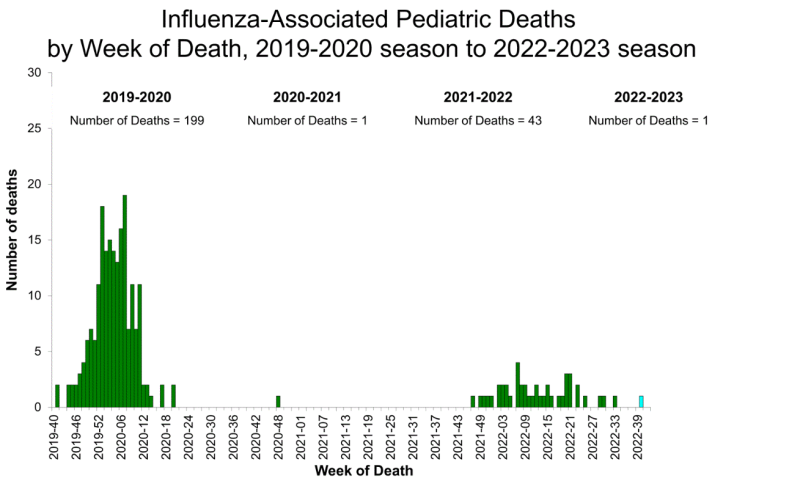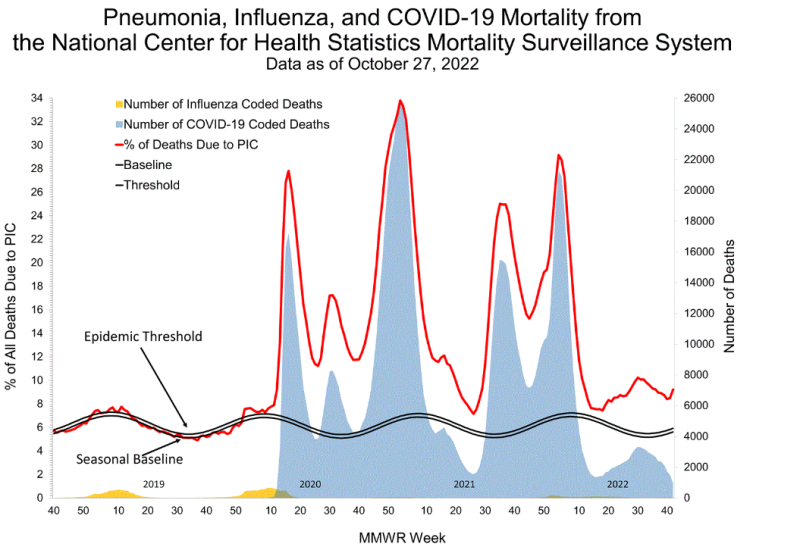Influenza launched an early attack on the U.S. this year, according to the Centers for Disease Control and Prevention (CDC), and it, along with respiratory syncytial virus (RSV) and COVID-19—abbreviated as PIC—seem to be hitting children particularly hard, an infection prevention expert told Fierce Healthcare.
“We’re seeing a lot of kids being hospitalized with the flu, RSV, and COVID, all at one time,” said Linda Spaulding. “So, people aren’t doing a very good job of keeping a mask on their kids to prevent them from getting those three things.”
Spaulding currently consults for a large hospital system with campuses in Texas, Louisiana and New Mexico. She’s reviewing the system’s infection prevention programs to suggest ways it can decrease central-line and urinary tract infections. She predicts that pediatric beds in hospitals will fill up.
“Adults can handle it, but if the little kids get RSV and the flu, they have a horrible time breathing,” says Spaulding.

The CDC says that for the week ending Oct. 22, or Week 42, the overall cumulative hospitalization rate per 100,000 people was 1.5, and that’s the highest Week 42 since the 2010-11 flu season.
FluView, the CDC’s weekly influenza surveillance report, states that “the highest hospitalization rates per 100,000 population were among adults aged ≥ 65 years (3.0) and children aged 0-4 years (3.0), followed by children aged 5-17 years (1.7), adults aged 50-64 (1.3) and adults aged 18-49 years (0.8).”
According to mortality surveillance preliminary data from the National Center for Health Statistics available Oct. 27, 9.2% of deaths that occurred in Week 42 were PIC deaths.
“This percentage is above the epidemic threshold of 5.9% for this week,” the CDC states. “Among the 2,128 PIC deaths reported for this week, 949 had COVID-19 listed as an underlying or contributing cause of death on the death certificate, and 15 listed influenza, indicating that current PIC mortality is due primarily to COVID-19 and not influenza.”

Spaulding tells Fierce Healthcare that “this year, the flu has picked it up a little bit earlier than it usually did. And so, it’s important for people get their flu vaccine as soon as possible, because it takes two weeks before it's fully effective.”
The states hit hardest by flu are in the southeast (Alabama, Florida, Georgia, Kentucky, Mississippi, North Carolina, South Carolina and Tennessee) and south central (Texas, Oklahoma, Arizona, Louisiana and New Mexico) regions of the country.
Other key points about Week 42 include:
- The first influenza-associated pediatric death of the 2022-23 season
- So far this season, there have been at least 880,000 flu illnesses, 6,900 hospitalizations and 360 deaths from flu.
And the CDC notes that:
- An annual flu vaccine is the best way to protect against flu. Vaccination helps prevent infection and can also prevent serious outcomes in people who get vaccinated but still get sick with flu.
- CDC recommends that everyone ages 6 months and older get a flu vaccine annually.
- There are also prescription flu antiviral drugs that can be used to treat flu illness, and those need to be started as early as possible.